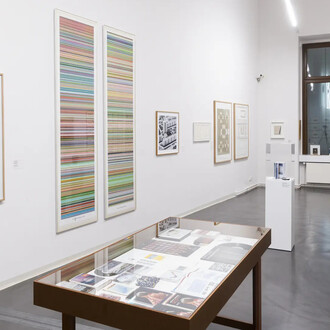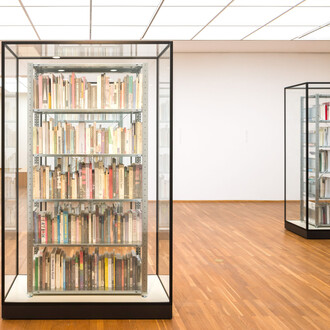Tin – the gleaming, silvery white, easily castable heavy metal – seems to have been almost forgotten in contemporary design discourse. In contrast, the material enjoyed great popularity over 100 years ago, especially in Art Nouveau style with its outstanding objects, such as ornately decorated cups, plates and candlesticks. But the historical use of tin goes back much further. The exhibition Tin: from the mine to the museum at the MK&G, in which students of the Humboldt-Universität zu Berlin are involved, traces the origins and ecological background of tin as a material based on around 30 selected examples. The exhibition includes objects by renowned turn-of-the-century designers such as Peter Behrens, Jules Desbois and Joseph Maria Olbrich as well as pieces fabricated by the renowned Kayser-Zinn Manufaktur and the Württembergische Metallwarenfabrik (WMF).
Around 300 to 400 million years ago, geological processes resulted in the formation of tin deposits in various types of igneous rock such as granite. Wind and water then eroded the rock and exposed the deposits over the course of several million years. Humans have only been mining and utilising this ore for around 6,000 years.
After the material had already been subject to metallurgical processing for several centuries, tin mining then experienced a boom in the nineteenth century in European regions such as the Erzgebirge in Germany and Cornwall in England. The MK&G’s Applied Arts and Design Collection includes several objects made of tin, or more commonly pewter, a high-tin alloy, that reflect this development. In the late nineteenth and early twentieth centuries, designers and manufacturers began to experiment more and more with pewter casting as a form of expression for decorative objects in the emerging Art Nouveau style.
Based on the objects in the MK&G’s collection, the exhibition traces the material’s branching paths – from the mine to the museum – and sheds light on the ecological realities associated with the mining and processing of tin. In addition, a material biography expands on the history of the museum objects and sheds light on the mostly hidden origins of tin.
The exhibition is being organised in collaboration with the Department of Cultural History and Theory at Humboldt University of Berlin. In a seminar during the winter semester 2024/25, students will work with the MK&G to develop case studies that will be integrated into the exhibition.
















